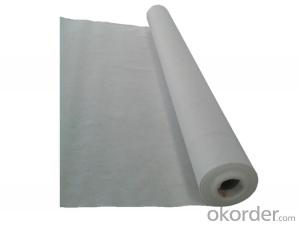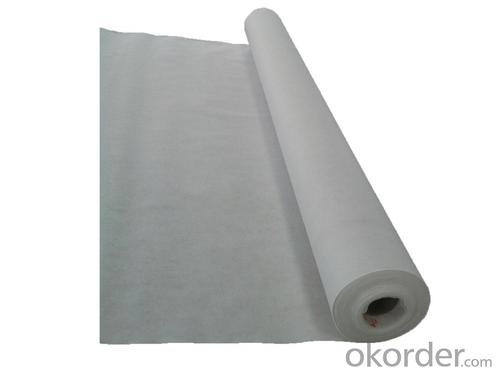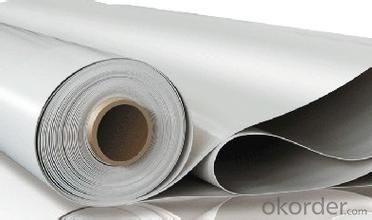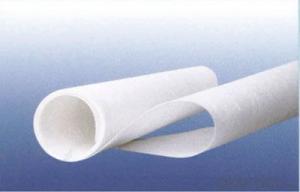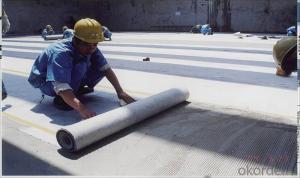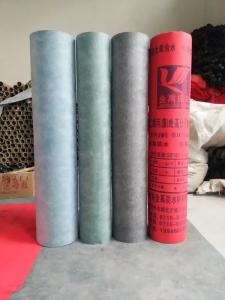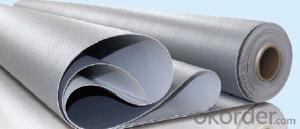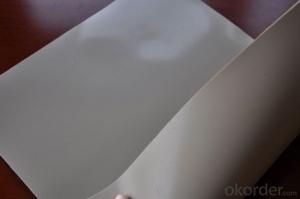Polyethylene Polymer Composite Waterproofing Membrane
- Loading Port:
- China main port
- Payment Terms:
- TT OR LC
- Min Order Qty:
- 5000 m²
- Supply Capability:
- 100000 m²/month
OKorder Service Pledge
OKorder Financial Service
You Might Also Like
1.Structure of Polyethylene Polymer Composite Waterproofing Membrane Description:
Polyethylene polymer composite waterproofing membrane is non-woven fabrics and polyethylene as the main raw materials, by adding chemical fertilizer to improve its performance.It will enhance protection layer, prevent aging, waterproof layer, and viscosity enhancement layer four layers of sheet material processing as one of the new PE c (polyester) nylon composite waterproof roll.It belongs to FS2 polyethylene resin series polymer composite waterproofing materials.It is in the full study existing waterproof, seepage type coil products, on the basis of according to the requirements of modern waterproof engineering of waterproof, seepage control material, adopt new technology, new process through a composite processing.The product is a synthetic polymer coil.
2.Main Features of Polyethylene Polymer Composite Waterproofing Membrane:
•The permanent waterproof
•Long service life, no smell, environmental protection
•Strong weather resistance
•Good flexibilty
•Firm adhesion,strong permanency
3.Polyethylene Polymer Composite Waterproofing Membrane Specification:
| Name | Gram Weight | Length | Width | |
| Polyethylene Polymer Composite Waterproofing Membrane | 200g/m2-1200g/m2 | 1200m | 100m/roll | |
| 1500m | 50m/roll | |||
4. Polyethylene Polymer Composite Waterproofing Membrane Images:
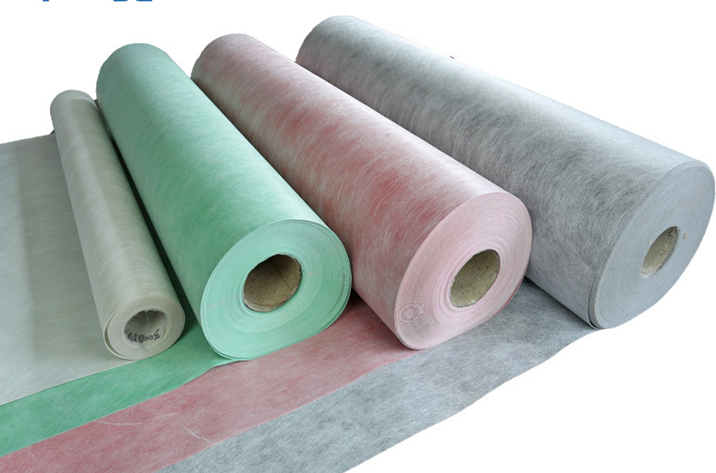
- Q: Can a waterproofing membrane be used for podium decks or plaza areas?
- Podium decks or plaza areas can benefit from the application of a waterproofing membrane. It is highly recommended to utilize this protective layer in order to safeguard the underlying structure from water-related harm. Given their exposure to the elements, podium decks and plaza areas are susceptible to water infiltration. By implementing a waterproofing membrane, water seepage into the lower layers can be effectively prevented, thus ensuring the long-lasting durability and structural integrity of the deck or plaza. Furthermore, this waterproofing membrane is also capable of shielding spaces beneath the deck or plaza, such as basements or parking garages, from potential water damage. Therefore, it is crucial to select a top-notch waterproofing membrane specifically designed for outdoor purposes, and to carefully adhere to the manufacturer's instructions regarding proper installation and maintenance.
- Q: Can a waterproofing membrane prevent water leakage in basements?
- Yes, a waterproofing membrane can effectively prevent water leakage in basements. The membrane acts as a barrier, preventing water from seeping through the foundation walls or basement floors. It is designed to withstand hydrostatic pressure and provide a durable and long-lasting solution to keep basements dry and protected from water damage.
- Q: Can a waterproofing membrane be used on concrete block surfaces?
- Concrete block surfaces can indeed benefit from the application of a waterproofing membrane. These membranes are specifically designed to act as a shield against moisture and water infiltration, which makes them a popular choice for safeguarding concrete block surfaces against water-related harm and leaks. To achieve this, the membranes are either applied as a liquid or in sheet form, bonding to the surface of the concrete blocks and forming a protective layer that prevents water from seeping through. By reducing the risks of water damage, mold growth, and deterioration, the lifespan of the concrete blocks can be extended with the help of this waterproofing membrane. It is crucial to select a membrane that is specifically tailored for concrete block surfaces, and to follow the manufacturer's instructions carefully during installation to ensure optimal results.
- Q: Does a waterproofing membrane require any special tools for installation?
- Yes, installing a waterproofing membrane typically requires a few special tools. These tools may include a utility knife or scissors to cut the membrane to size, a trowel or notched trowel to spread the adhesive or mortar, a roller or squeegee to ensure proper adhesion, a brush or sprayer for applying any necessary primers or sealants, and a heat gun or torch for activating the self-adhesive membranes. Additionally, depending on the specific installation method and membrane type, other tools such as a nail gun, stapler, or specialized membrane fasteners may be required. It is important to consult the manufacturer's installation guidelines and recommendations to determine the exact tools needed for a specific waterproofing membrane.
- Q: Can a waterproofing membrane be used on brass surfaces?
- To safeguard surfaces from water infiltration and harm, one usually employs a waterproofing membrane. Despite brass surfaces not being particularly susceptible to water damage, an additional safeguarding layer can still be applied in the form of a waterproofing membrane. This can aid in the prevention of moisture accumulation on the brass surface, ultimately averting tarnishing or corrosion. Nonetheless, it is crucial to acknowledge that brass surfaces are often sought after for their innate patina and aesthetic allure. The application of a waterproofing membrane may alter the brass's appearance, potentially resulting in a glossy or artificial finish. Thus, it is prudent to thoroughly ponder the desired outcome prior to opting for the utilization of a waterproofing membrane on brass surfaces.
- Q: Elastomer modified asphalt waterproofing membrane for what purpose? Need to pay attention to a few things?
- Second, the construction quality Full adhesion to prevent wrinkles or hollowing; semi-adhesive attention to the unbonded to under fire, so that the membrane close to the base surface; empty shop attention around the adhesive, and pressurized. Hot melt adhesive, with the fire to be appropriate to the surface of the coil is not subject to black, avoid slow baking. Winter construction selection of low temperature flexibility than the construction temperature of 10 ℃ lower temperature products, and the coil stored at 0 ℃ above the place before use into the scene, handling to prevent throwing throw.
- Q: Can waterproofing membranes be used on underground structures?
- Yes, waterproofing membranes can be used on underground structures.
- Q: Does a waterproofing membrane provide any additional structural reinforcement?
- No, a waterproofing membrane does not provide any additional structural reinforcement. The primary purpose of a waterproofing membrane is to prevent the ingress of water or moisture into a building or structure. It acts as a barrier, typically applied on the exterior surface, to keep water out and protect the underlying materials from damage caused by water. While it can enhance the durability and longevity of a structure by preventing water-related issues such as leakage, dampness, or mold growth, it does not contribute to the structural integrity or strength of the building. Structural reinforcement is typically achieved through the use of materials like steel, concrete, or other load-bearing components, which are designed to carry and distribute the weight and loads of the structure.
- Q: Can a waterproofing membrane be used in kitchens?
- Certainly! Kitchens can indeed benefit from the application of a waterproofing membrane. It is strongly advised to employ such membranes in spaces that are susceptible to moisture and water, like kitchens. These specialized membranes are engineered to establish a shield against water, thwarting its infiltration into the foundation and safeguarding it against harm. They are frequently utilized on floors, walls, and even countertops to ensure a tight seal that resists water damage, the growth of mold, and various other complications. Moreover, waterproofing membranes can aid in soundproofing while enhancing the sturdiness and lifespan of kitchen surfaces.
- Q: Can a waterproofing membrane be installed on wood surfaces?
- Yes, a waterproofing membrane can be installed on wood surfaces. Waterproofing membranes are commonly used on various surfaces including wood, concrete, and metal. When applied to wood surfaces, the membrane acts as a protective barrier, preventing water from seeping into the wood and causing damage such as rot, warping, or decay. It is important to choose a waterproofing membrane that is specifically designed for wood, as some products may not be suitable for this surface. Additionally, proper surface preparation and application techniques should be followed to ensure a strong and effective bond between the membrane and the wood surface.
Send your message to us
Polyethylene Polymer Composite Waterproofing Membrane
- Loading Port:
- China main port
- Payment Terms:
- TT OR LC
- Min Order Qty:
- 5000 m²
- Supply Capability:
- 100000 m²/month
OKorder Service Pledge
OKorder Financial Service
Similar products
Hot products
Hot Searches
Related keywords
